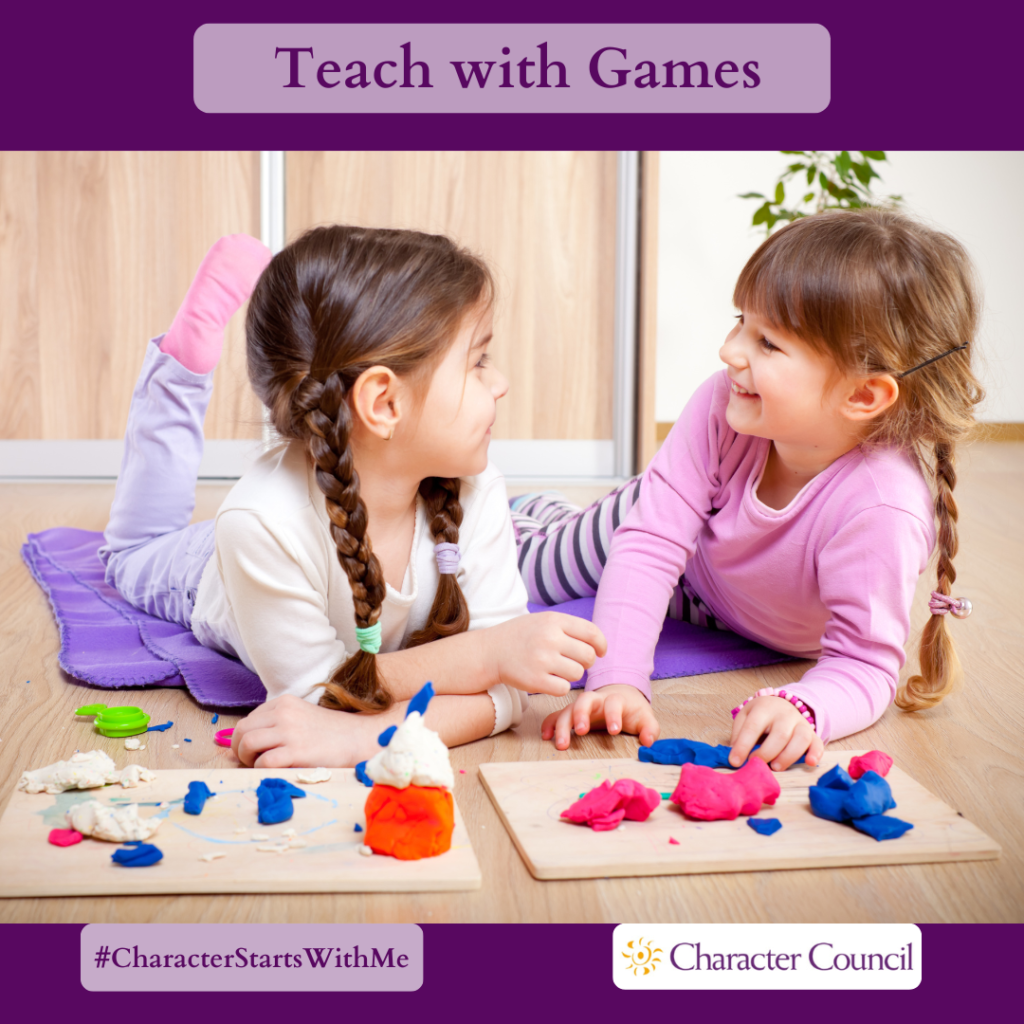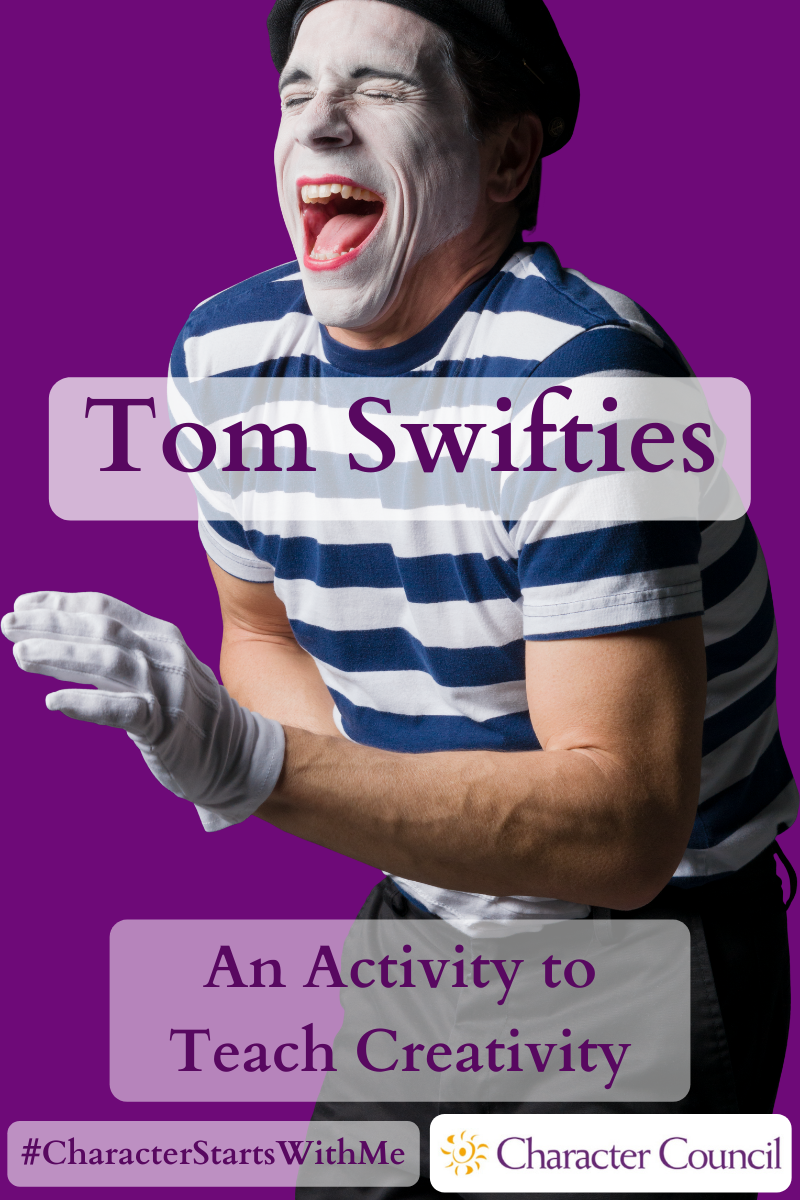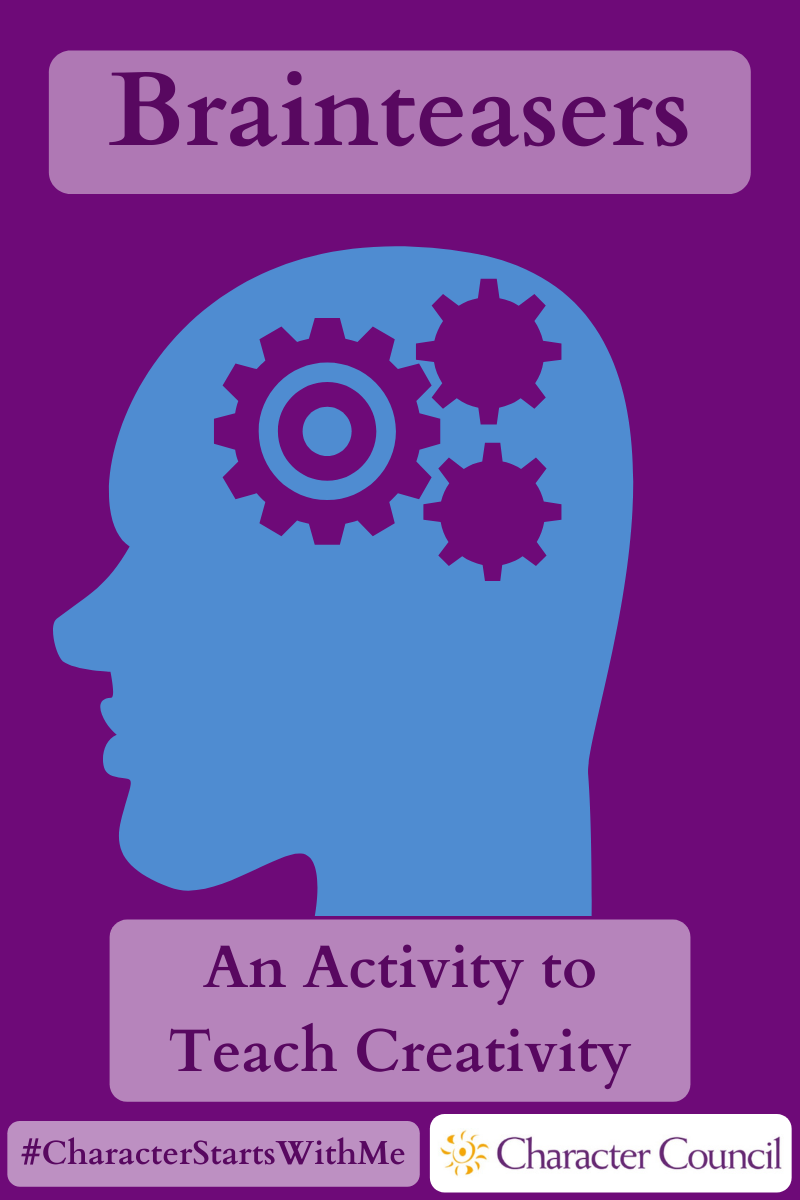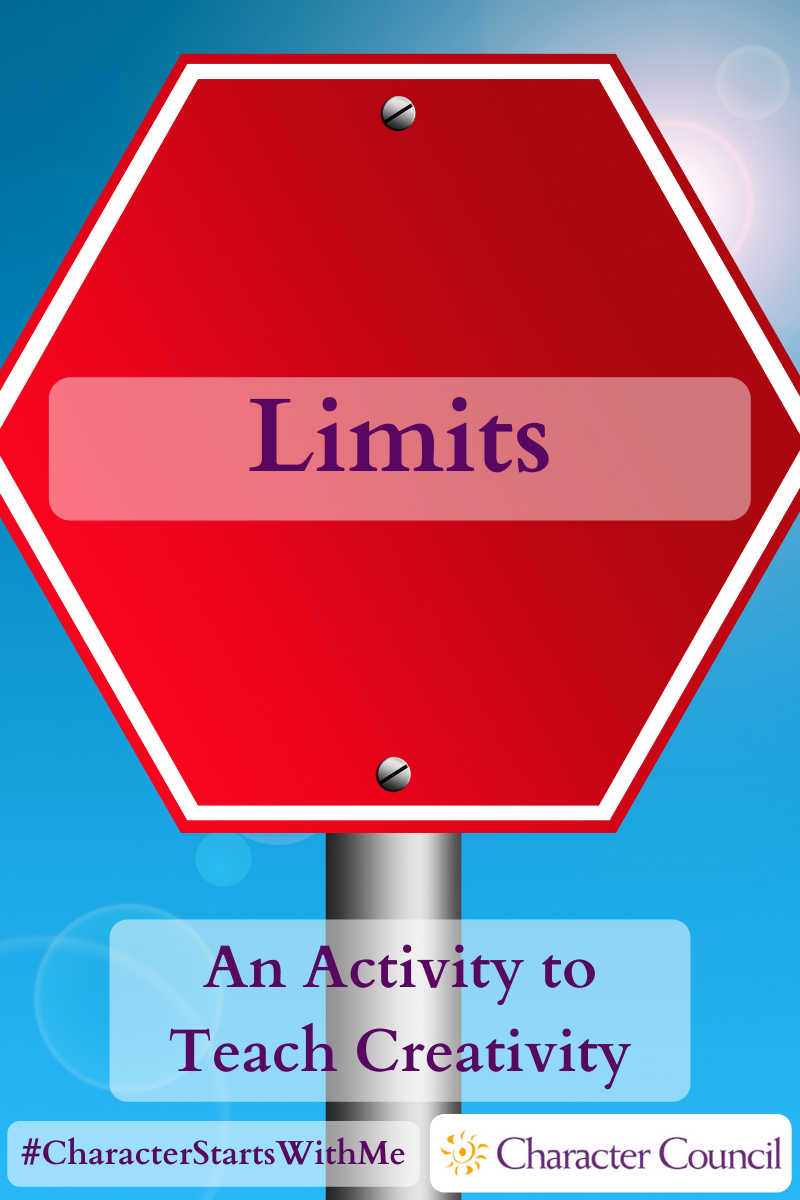
Creativity Activities
The activities here are fun ways to teach character. The game aspect makes the lesson more memorable. Each activity has processing questions at the end. Without processing the activity, the exercise is just a game. To make it a stronger lesson when you process it, relate the character quality to a core value that your organization promotes.
Consider picking a student to run the activity. You will need to give them time ahead of the activity to prepare. Another option is to pick a few students to run the activity for a younger classroom after you have run it for your class. Encourage your students to repeat it in the home for younger siblings or even parents.

Tom Swifties
Tom Swifties are fun to create. They are a sentence in which an adverb relates both properly and “punningly” to a sentence of reported speech. An example: “I feel like I’ve been run over by a car!” Tom said flatly. Or “I need a pencil sharpener,” Tom said bluntly. There are actually many forms of Tom Swifties, but this form is the easiest to copy. Come up with several of your own, perhaps using current vocabulary words, and then let the students come up with some on their own, either individually or in groups. It sometimes helps to start by thinking of adverbs first and then creating their Tom Swifty around it. (This is a good time for lessons on adverbs and punctuation for quoted speech.) After your students have created some, write them on the board or post them on the bulletin board. This type of assignment tends to stick with kids, and days later, they will bring you more Tom Swifties.
Visit Wikipedia for some examples from the book series that started these puns.
To process the activity, ask these or similar questions:
- Did you like creating Tom Swifties?
-
Was it enjoyable to listen to the ones written by others?
Creativity is not as much about art as it is about a new perspective on something. Has Tom Swifties given you a new perspective on adverbs?
Brainteasers
Brainteasers are a great test of one’s ability to let go of paradigms that can restrict your thinking. Brainteasers can be verbal or visual. Some examples are below:
Riddles
A riddle is a question in which the answer is usually a play on words, contains a double meaning, or is a trick question. Mary’s father has 5 daughters – Nana, Nene, Nini, Nono. What is the fifth daughter’s name? If you answered Nunu, you are wrong. It’s Mary!
Find more riddles here>>
Optical Illusions
Pictures that the brain can perceive in different ways. Rubin’s vase can be seen as a vase or two faces looking at each other.
Find more illusions here>>
Logic Puzzles
Logic Puzzles can be a simple question with a single answer, or it can be a grid-type question where you are given several facts and asked to deduce a single answer or a pairing of answers. Anne, Olivia, and Jenita are the daughters of Mr. Jack, Mr. Brown, and Mr. Ran. Four of these people are playing badminton doubles. Mr. Ran’s daughter and Mr. Jack are partners. Anne’s father and Mr. Brown’s daughter are also partners. There are not any father-daughter combinations. Who is Anne’s father? As there are not any father-daughter combinations, Mr. Brown is not Anne’s father. Anne can play with Mr.Jack, so he cannot be her father. Therefore, Mr.Ran is Anne’s father.
Find more logic puzzles here>>
There are many types of brainteaser puzzles. Choose some that are appropriate for your classroom. Divide the students into groups and let them work on a brain teaser together. When they are done, let each group share their puzzle and answer with the class.
To process the activity, ask these or similar questions:
- Was it fun to solve a puzzle?
- (If you struggled, it is okay. Everyone has puzzles that are easier for them, and this one may not be your type.)
- Did you have to look at something differently to see the truth of the puzzle?
- Do you think your experiences affect how you see a puzzle? In other words, do experiences affect your perspective?
- Once you saw the trick or twist in the puzzle, did it become obvious?
- Did this activity help you see the value of a different perspective?
Final thought: By challenging your brain to think in different ways, you can train your brain to think creatively when solving the puzzles that life throws your way.
Limits
Sometimes when you give an assignment, you leave the boundaries wide open, expecting to get creative results. Normally students will choose something they have done before or are familiar with. If you want to really make it creative, limit what they can use or do and force creativity to happen within strict boundaries. For example, you may give an assignment to write a short story but give them 16 words they must use or give them the first paragraph, and they need to write the ending. I remember a teacher in grade school played audio story prompts (on a record player!). It was just sound effects in a setting, and we each had to write a story to go with the sounds we heard. It was amazing how different our stories were. Our life stories are all that different. For examples of audio writing prompts, visit the ambient mixer.
If you choose to use art as the assignment, you may want to restrict them to only drawing straight lines or let each student randomly choose 2 colors (before giving them the assignment), and that is all they can use. For a history lesson, have them write a scene from history using real characters but give them a setting that was not in the books. You could also bring a historical character into the present and ask how they would react to a current-day event or problem. They must describe how each would act according to what they know about them.
When finished, process the activity with these or similar questions:
- Did you like being challenged with restrictions?
- Do you think you would have thought of your final product without those restrictions?
- What steps did they take to determine how you would proceed?
- How different were the finished products?
- Did doing this exercise give you the confidence to be creative in solving problems – no matter what they are?
Final thought: Thinking in this way strengthens creative thinking skills.


